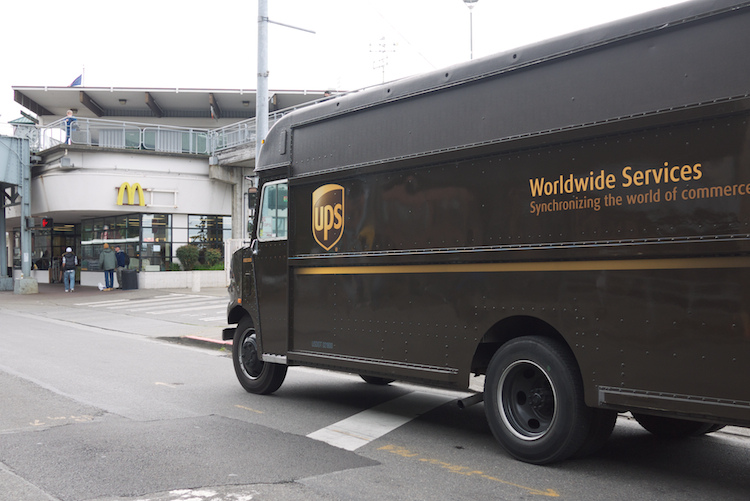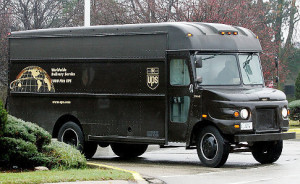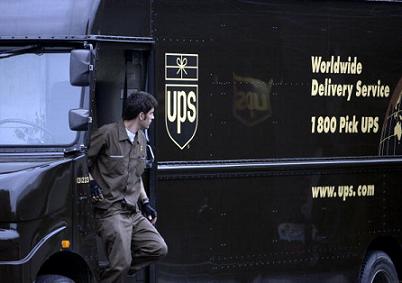Tag Archives: UPS contract
Hopefully Not Reality
Truckin’
What’s solidarity ??
Petition to UPS
Require UPS to provide air conditioning to delivery drivers. Arizona experiences record breaking heat, every year.
As a UPS driver, who drives 8-10 hours a day in a solid metal truck with no air, my husband is at risk of injury every day. The temperature inside the cargo area is 15-20 degrees hotter than the outside temperature. Average temperatures in Arizona, for 5 months out of the year, are over 110 degrees. That means that the cargo area in a UPS truck is at least 125 degrees. This is extremely dangerous, as not only is the temperature a factor but a UPS driver is not allowed to go home until all of the packages on his truck are delivered. Imagine running for 8-10 hours in a fluctuating temperature of 100-125 degrees…dangerous right?
Even after 20 years of service, my husband still has no air but twice as much work during the summer than the rest of the year. As a Fortune 500 company, UPS could show appreciation to their dedicated drivers by giving them air conditioning in their vehicles. UPS is the ONLY company that does not provide this comfort. In the excessive heat of the southwest, it is mandatory for the health and safety of all UPS drivers to have air conditioning. If it is illegal in the state of Arizona to leave a child or pet in your vehicle during the hot summer months, then it is only reasonable to suggest that safety measures, such as air conditioning, be required in UPS trucks.
Delivery drivers are the ONLY employees, within UPS, who do not have vehicles with air conditioning.
Please sign, share and support us as we ask UPS to give all of their employees the same treatment, provide air conditioning for your package car drivers.
*We would also like to ask the State of Arizona to enact a safety measure to protect anyone who would be required to endure extreme temperatures inside of non air conditioned vehicles. *
Simple Question, Simple Answer, UPS/IBT Official Website for UPS Full Timers
Retirees Listen UP
1.5 million pensioners may soon see benefit cuts
WASHINGTON – Retirees covered by financially troubled multiemployer pensions could soon see their benefits cut under a $1.1 trillion congressional spending deal to keep the government running.
Architects of the proposal said it was the best way to keep the pension plans viable and benefits flowing to retirees.
“We have a plan here that first and foremost works for the members of the unions, the workers in these companies and it works for the companies,” said Rep. George Miller, D-Calif., who worked the deal out with Rep. John Kline, R-Minn.
But it quickly drew fire from some labor unions and AARP, who denounced what they call backroom deal-making that will create hardships for older Americans.
A vote on the overall spending plan was expected before week’s end.
Here are some questions and answers about multiemployer pension plans and the impact of the congressional move.
___
What are multiemployer pension plans?
These plans are usually found in industries that have many small employers that would not ordinarily put together a pension plan on their own, according to a report from Boston College’s Center for Retirement Research.
More than 10 million people are covered by the plans, which involve agreements between labor unions and a group of companies. Many plans cover those who work in construction, but they are also can be found in the transportation, retail and trade sectors.
All told, there are about 1,400 multiemployer pension plans.
___
How did things get so bad?
About 150 to 200 of these plans covering 1.5 million people are in financial trouble and could become insolvent within a few years, according to estimates from the Pension Benefit Guaranty Corp. (PBGC). The agency was established by Congress to take over failed and failing pensions when they run out of money.
The plans were once thought to be secure, but a decline in unionization and financial crises like the Great Recession have left them with fewer workers to pay into them.
The PBGC says it’s about $42.4 billion short of the money it would need to pay out pensions for plans that have failed or will fail. That’s up from $8.3 billion in 2013.
The congressional proposal essentially shifts much of the risk from the government back onto the retirees and their funds.
Alicia H. Munnell, a Boston College professor and director of the school’s Center for Retirement Research, says that decision was made out of desperation.
“They’re at a point in time where it’s impossible to cut benefits for new employees any further,” she said. “It’s sort of impossible to ask employers for any more money, so the question is what do you do?
“It’s a place where there’s no good options.”
___
What kind of cuts are looming?
This can vary widely, depending in large part on the financial condition of the plan and the wages paid in the industry.
“We have plans where a 10 percent cut will be enough to allow them to survive and thrive,” said Randy DeFrehn, executive director of the National Coordinating Committee for Multiemployer Plans, an advocacy group that consulted with Congress on the legislation.
In other cases, reductions as high as 30 percent may be necessary.
Some cuts may eventually be restored. That depends on factors like the industry, the plan’s location and how much trouble it was in when the cuts were made.
“It’s a function of a lot of different things,” DeFrehn said.
People will know whether their plans face a cut because they will have to vote on the cuts.
___
What about other pension plans?
Single-employer pension plans are much more common, covering about 31 million workers and retirees in around 22,300 plans.
The PBGC said in June that it was “highly unlikely” that its single employer program would run out of funds in the next decade.
The improving economy, better market returns and an $869 million jump in income from legislative changes led to the improvement.
“It’s a well-functioning pension insurance program, it’s adequately funded, it’s in fine shape,” Munnell said.
The PBGC does not guarantee government pensions, and those were targeted for cuts in the Detroit bankruptcy case. But Munnell said her research shows states are “absolutely committed” to paying benefits.
“In the end, the cuts to pensions in Detroit were relatively modest,” she added.
___
What’s the reaction?
Among unions, it’s mixed.
The AFL-CIO’s Building and Construction Trades Department has been generally supportive. But the Teamsters and Machinist unions blasted the provision.
“Today, we have seen the ugly side of political backroom dealings as thousands of retirees may have their pensions threatened by proposed legislation that reportedly contains massive benefit cuts,” said Teamsters President James Hoffa.
Machinists International President Tom Buffenbarger said, “While there is a genuine retirement crisis in this country today, the solution must not be borne by retirees who worked hard and faithfully contributed to their pension plans and have no practical means to replace lost income.”
The AARP, which says it represents millions of retirement-age Americans, also attacked the agreement as a “secret, last-minute, closed-door deal between a group of companies, unions and Washington politicians to cut the retirement benefits that have been promised to them.”
Karen Friedman of the Pension Rights Center, a group that opposes the changes, called the move “outrageous. We think that Congress is sneaking through a provision that would torpedo the most sacred protections of the federal private pension law and will devastate retirees.”
CBSnews
UPS Store data breach includes 3 Colorado stores
DENVER – Some customers of The UPS Store may have had their credit and debit card information exposed by a computer virus found on systems at 51 stores, including three in Colorado.
A spokeswoman for UPS says the information includes card numbers, postal and email addresses from about 100,000 transactions between Jan. 20 and Aug. 11.
United Parcel Service Inc. said Wednesday that it was among U.S. retailers who got a government bulletin about the malware on July 31. The malware is not identified by current anti-virus software.
UPS spokeswoman Chelsea Lee says the company is not aware of any fraud related to the attack.
Atlanta-based UPS says it hired a security firm that found the virus in systems at stores in 24 states, about 1 percent of the company’s 4,470 franchised locations.
The Colorado locations involved are:
- Aurora – 3124 South Parker Road #A2
- Greenwood Village – 5910 South University Boulevard Suite C-18
- Lakewood – 12081 West Alameda Parkway






